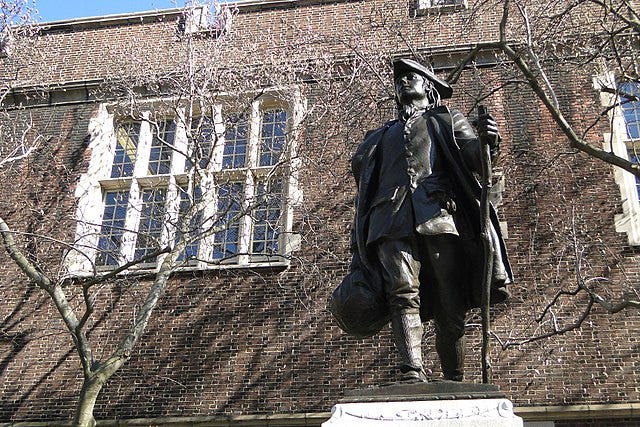The Character of Characters
This is the last installment of a piece I’ve been working on. Comments welcome! —Jim
Last time I asked what I have to offer you as an alternative to the American story of Progress. My answer: less than I’d like. It’s taken me a long time to get to this point, and one reason for that is that I’ve had difficulty surrendering that story. There are others—I call them myths, or stories that are widely believed but cannot be empirically confirmed—that I’ve had to let go of retelling as well. The myth of the frontier (from virgin land to outer space). The myth of the Good War (whether the Civil War or World War II). Above all, the myth of the American Dream of upward mobility: stories that helped us see ourselves as part of larger dramas that could explain, motivate, comfort. The wages of empire, you might say. Now largely spent.
But not entirely. I will confess that I haven’t given up on these stories: they shaped my life; they still speak to me; I hope that they may yet be transfigured in some way. If I had more imagination, maybe I could craft a different story, a better story, that could command your attention or loyalty. In any event, such stories are usually a matter of collective effort—and belief. In some small way, my hope is that the imprint of these old stories on me will make an impression on you, less as a matter of explanation or persuasion than as an oblique example of how they can give one’s life a shape and a voice.
What I really have to offer you instead is not a set of grand narratives, but rather a gallery of people I’ve come to know over the course of my life—remarkable people who have managed to capture the spirit of their age, who have done remarkable things, and who, above all, embodied traits that are worth considering and emulating as Americans and as citizens of the world. Olympic athletes of virtue who have played games of life with inspiring skill. That’s what great art does. Which, as we know, can take many forms. All of which enlarge us.
Now, I haven’t actually met any of these people, most of whom were dead long before I was born. In some sense, my relationships with them are one-sided: the technical term is “parasocial.” But not exactly that, because my experiences with them have been shaped by others’ relationships with them, and will be shaped by how you apprehend—and, maybe, someday, revise—those perceptions yourself. I realize that the reality of these people as I convey it can be blurry in these snapshots I’ve taken. But that blurriness can also be apparent in your gaze upon the person who sleeps by your side each night.
I’m trying to do three things with this set of portraits. The first, as I’ve already indicated, is to provide sheer pleasure: really, they are a joy to behold, even amid, despite—or, in some cases because of—their flaws. The sands of time obscured or effaced the contours of their lives, which are worth dusting off and retracing. I’m hoping to convey a lived experience with these people: how it’s felt to have them in one’s life over many years. I’m aiming for something like how you’d talk about someone you went to school with or a colleague you’ve known at work: familiar, but also a little mysterious, not entirely knowable, and intriguing for that reason. In such cases, your own batch of information mingles that with the collective lore of what you’ve heard. The resulting picture isn’t objective or complete, and yet can be quite vivid, revealing—enlivening.
The second thing I’m hoping to give you is a way of thinking about what makes their legacy valuable. To some degree, this is a matter of context: appreciating them can be a matter of understanding the possibilities and limits of their lives as they understood them, and illuminating the possibilities and limits of our own. But the traits they embodied transcend time and, as such, can help one understand what they might mean in a contemporary context.
Which brings us to the final and most important thing I aspire to offer you: hope. Hope that the virtues these people embodied really was a living, surprising thing, is a living, surprising thing, and may yet live abroad in this great hard land. As Americans we have a claim on them and they on us, in part because America is itself an idea, a dream that became real. It feels good to know that.
So let’s go. They await us.
Note: to date, I’ve sketched portraits of Anne Bradstreet, Benjamin Franklin, George Washington, and Martin Luther King, Jr. I hope to add to that gallery.

